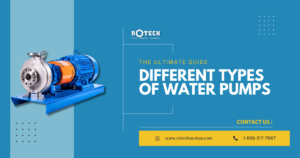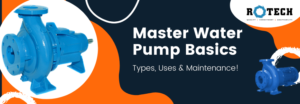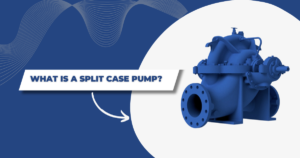In the intricate world of fluid dynamics and industrial machinery, self-priming pumps stand out as versatile workhorses that have revolutionized the pumping landscape. These pumps are indispensable in a wide array of applications, ranging from domestic water supply to complex industrial processes. In this comprehensive guide, we delve into the depths of self-priming pump technology, understanding its mechanisms, exploring different types, and outlining factors to consider when choosing the optimal pump for various scenarios.
Purpose of Self-Priming Pumps
At the heart of fluid transfer systems, self-priming pumps emerge as a class of pumps capable of lifting fluids from lower levels without external priming. Unlike conventional pumps, which require manual priming or external assistance to initiate the pumping process, self-priming pumps possess the unique ability to evacuate air from the suction line and start the flow of fluid automatically. This feature significantly reduces downtime, improves operational efficiency, and eliminates the need for continuous supervision.
Importance of Self-Priming Pumps in Various Industries
In various sectors, the importance of self-priming pumps echoes resoundingly:
- Agriculture’s Ally: In agriculture, they streamline irrigation, swiftly drawing water from various elevations.
- Construction & Mining: These pumps tackle dewatering tasks and slurry transfers on construction sites and mines.
- Chemical & Pharma: In these precision-driven realms, self-priming pumps ensure consistent fluid transfers, maintaining quality.
- Emergency Response: They play a crucial role in firefighting and municipal services.
- Domestic Dependability: For homes, they guarantee a steady water supply.
This guide aims to unravel the intricate world of self-priming pumps, offering insights into their operation, exploring various types available, and discussing the factors that steer the selection process. From standard centrifugal pumps to specialized liquid ring and diaphragm pumps, we embark on a journey through the diversity of self-priming technology. By the end, readers will possess the knowledge needed to make informed decisions when faced with the task of choosing the right self-priming pump for their specific requirements.
Understanding Self-Priming Pumps Brief Explanation of Pump Priming
Priming, in the context of pumping, refers to the process of removing air or gases from the pump and suction pipe to enable smooth fluid flow. Conventionally, pumps demand manual priming, a time-consuming and often cumbersome process. Self-priming pumps, however, automate this procedure by utilizing their design and internal mechanisms to expel air and initiate pumping autonomously. This innovation not only saves time but also enhances safety and operational efficiency.
How Self-Priming Pumps Differ from Conventional Pumps
Differentiating self-priming pumps from their conventional counterparts lies in their ability to handle air and gas-laden fluids. While conventional pumps struggle to create the necessary vacuum for fluid movement, self-priming pumps efficiently expel air and initiate fluid transfer without external intervention. This distinction stems from the ingenious incorporation of mechanisms like air separation chambers and impeller designs, allowing self-priming pumps to excel in scenarios where conventional pumps falter.
Mechanism Behind Self-Priming Ability
The self-priming capability of these pumps arises from their internal structures. One of the primary components facilitating this functionality is the impeller, strategically designed to accommodate air and effectively push it out of the system. Additionally, air separation chambers or valves play a pivotal role in isolating and expelling air from the pump chamber. The precise arrangement of these components creates a harmonious symphony of forces that enable self-priming pumps to effortlessly transition from air evacuation to fluid transfer.
Types of Self-Priming Pumps Standard Self-Priming Centrifugal Pump
The standard self-priming centrifugal pump showcases the brilliance of engineering innovation. Let’s dive into its intricacies:
- Impeller Magic: At its core, this pump operates by harnessing centrifugal force and impeller dynamics. As the impeller spins, it creates a low-pressure region, drawing fluid from the suction line.
- Air Expulsion: Simultaneously, an air separation chamber comes into play, efficiently expelling air from the pump chamber. This dual-action mechanism enables the pump to prime itself, eliminating the need for external assistance.
- Application Versatility: This pump finds its home in various domains, from domestic water supply to commercial settings. Its adaptability shines in scenarios where intermittent operation is the norm.
- Pros Galore: Among its strengths are ease of installation, minimal maintenance demands, and the ability to cater to diverse flow rates.
- Limitations to Note: While this pump performs admirably with standard fluids, its efficiency might wane when handling high-viscosity substances. Moreover, it’s not the top pick for tasks demanding high suction lifts.
Whether it’s about ensuring your garden’s hydration or supporting commercial operations, the standard self-priming centrifugal pump proves its mettle through its ingenious design and versatile functionality.
Liquid Ring Self-Priming Pump
Liquid ring self-priming pumps step onto the stage of fluid dynamics with a distinctive mechanism that transforms pumping operations. Here’s a closer look at what makes these pumps stand out:
1. Mechanism of Operation
The magic of liquid ring self-priming pumps lies in their ingenious design. Utilizing the power of centrifugal force generated by rotating impellers, these pumps create a liquid ring within the impeller chamber. This liquid ring acts as an effective seal, preventing the intrusion of air and facilitating automatic priming. The result? Seamless fluid flow without the need for external priming assistance.
2. Safety in Demanding Environments
Industries dealing with volatile or explosive fluids, such as the petrochemical sector, find a reliable companion in liquid ring pumps. The intrinsic safety offered by these pumps is a game-changer. Their ability to prevent air ingress enhances safety protocols, reducing the risk of potentially hazardous situations. This makes liquid ring pumps an invaluable asset where safety is paramount.
3. Resilience to Harsh Conditions
Navigating harsh and corrosive environments is a breeze for liquid ring self-priming pumps. The inherent resistance to corrosion ensures that these pumps retain their efficiency and performance, even in corrosive surroundings. This resilience prolongs the pump’s operational lifespan, making it a cost-effective and reliable choice in challenging settings.
4. Handling Gases and Vapors
The versatility of liquid ring pumps extends beyond mere fluid transfer. These pumps exhibit a remarkable ability to handle gases and vapors, a feature that finds application in various industries. This capability broadens the pump’s utility, making it an asset not only in fluid movement but also in managing vaporous substances.
5. Advantages Summarized
- Unique liquid ring mechanism for automatic priming.
- Ideal for industries with volatile or explosive fluids.
- Resilience to corrosion, ensuring longevity.
- Versatility in handling gases and vapors.
- Intrinsic safety enhances operational security.
6. Energy Consumption and Abrasive Fluids
As with any technology, there are considerations to bear in mind. Liquid ring pumps, while offering a range of advantages, do come with limitations. The maintenance of the liquid ring requires energy consumption, a factor that should be weighed against the benefits offered. Additionally, handling abrasive fluids might pose challenges and impact the pump’s longevity and efficiency.
In conclusion, liquid ring self-priming pumps are a testament to engineering innovation. With their unique liquid ring mechanism, they ensure automatic priming, making them invaluable in industries where safety and efficiency are paramount. While they excel in corrosive environments and offer versatility in managing gases and vapors, factors like energy consumption and abrasive fluid handling warrant careful consideration. As industries continue to evolve, these pumps stand ready to play a pivotal role in powering various operations.
Diaphragm Self-Priming Pump
In the realm of pumping innovation, diaphragm self-priming pumps shine as the epitome of precision. Operating through positive displacement, these pumps employ flexible diaphragms to orchestrate fluid movement. Here’s a quick dive into their excellence, especially in the chemical processing and pharmaceutical industries.
1. Precision Powerhouse
Diaphragm pumps embrace positive displacement, offering unparalleled precision. Unlike conventional pumps, they ensure accurate fluid measurement and delivery, critical in industries where every drop counts.
2. Chemical Compatibility Kings
When handling aggressive or corrosive fluids, diaphragm pumps take the throne. Their diaphragms resist chemical degradation, safeguarding both the fluid’s integrity and the pump’s performance.
3. Leak-Proof Guardians
Leakage is a nightmare for fluid systems. Diaphragm pumps counter this with sealed diaphragms that prevent any unwanted escape, maintaining fluid purity and operational safety.
4. Taming Viscosity
High-viscosity fluids often pose challenges, but diaphragm pumps conquer them. Their positive displacement mechanism handles such fluids efficiently, ensuring seamless transfers without sacrificing flow.
5. Wear with Care
While durable, diaphragms aren’t invincible. With time and exposure to abrasives, they can wear. Regular maintenance and diaphragm replacement are key to sustained performance.
6. Precision Over Flow
Diaphragm pumps excel in accuracy and chemical control, but their flow rates might lag behind centrifugal pumps. However, for scenarios where precision reigns supreme, this is a worthy trade-off.
In chemical processing and pharmaceutical sectors, diaphragm self-priming pumps emerge as heroes. Their precision, chemical compatibility, and leakage prevention prowess make them the go-to choice. While flow rate and diaphragm wear should be noted, their advantages far outweigh these considerations. For industries where chemical accuracy is non-negotiable, diaphragm pumps stand tall.
Trash Self-Priming Pump
When the going gets tough and fluids get messy, trash self-priming pumps step up as the ultimate solution. From construction sites dealing with debris to wastewater plants managing solids, these pumps bring reliability and efficiency to challenging scenarios:
1. Built Tough for Debris: Trash pumps sport larger passageways and impellers, effortlessly handling solids without clogging. They’re the go-to for environments where debris is a constant challenge.
2. Self-Cleaning Champions: Thanks to their innovative design, trash pumps prevent blockages caused by debris buildup. This self-cleaning feature ensures uninterrupted performance, minimizing downtime.
3. Solids Handling Pros: Trash pumps are tailor-made for managing sludge, debris, and solids-laden fluids. They excel where conventional pumps falter, making them reliable assets.
4. Efficient Solids Management: Trash pumps ace the efficiency game when it comes to solids. Their design optimizes solids handling, leading to smoother operations and less downtime.
5. Minimized Maintenance: With their self-cleaning mechanism and rugged build, trash pumps reduce maintenance disruptions. This translates to improved timelines and cost savings.
6. Versatility Unleashed: Whether it’s construction chaos or unpredictable debris, trash pumps thrive in demanding environments. Their adaptability shines through in tough conditions.
But Keep in Mind:
1. Clean Fluid Efficiency: Trash pumps shine in solids but might not perform optimally with clean fluids. Their design prioritizes solids handling, affecting efficiency with clean liquids.
2. Energy Considerations: Managing solids and debris affects energy consumption. Trash pumps require slightly more energy due to their solids-handling capability.
In conclusion, trash self-priming pumps are the unsung heroes in fluid handling. They handle solids-laden challenges with ease, offering reliability in messy scenarios. While they might be less efficient with clean fluids and have slightly higher energy needs, their advantages in demanding environments outweigh these considerations. For a dependable solution in managing solids, trash self-priming pumps rise above the rest.
Piston Self-Priming Pump
Piston self-priming pumps take the spotlight in applications requiring high-pressure and precision fluid delivery. Operating on a reciprocating piston mechanism, they ensure consistent flow rates against resistance. Here’s why they’re remarkable:
- High-Pressure Performance: Built for high pressure, these pumps shine in firefighting and irrigation, delivering water where it’s needed most.
- Precision Delivery: Their piston mechanism guarantees accurate fluid delivery, vital in industries like pharmaceuticals.
- Efficiency: Designed for minimal energy wastage, piston pumps offer cost savings and environmental benefits.
- Versatility: They adapt easily to various pressure requirements, making them perfect for different tasks.
- Maintenance Focus: Though maintenance-intensive to prevent piston wear, their performance justifies the effort.
- Control Sophistication: Managing pressure variations demands advanced control systems, adding complexity to their operation.
Piston self-priming pumps are engineering marvels, combining power and precision to serve firefighting, irrigation, and industrial needs. As technology advances, they’ll continue to be vital tools in the pursuit of efficient fluid transfer.
Air-Operated Self-Priming Pump
1. Power Beyond Wires: Air-operated self-priming pumps redefine fluid transfer in settings with limited or risky electricity access. Compressed air becomes the driving force, ensuring operations continue smoothly.
2. Safety and Adaptability: Industries dealing with chemicals, food processing, and paints benefit from explosion-proof operation and corrosion resistance. These pumps guarantee safe and hygienic processes.
3. Remote Reliability: Air-operated pumps shine in off-grid locations. Their independence from electricity grids makes them indispensable in remote areas with limited power infrastructure.
4. Key Advantages:
- Explosion-Proof Design: Ensures safe operation in hazardous environments.
- Corrosion Resistance: Handles corrosive fluids without compromising performance.
- Versatility in Remote Areas: Thrives in locations lacking stable power resources.
- Contamination Prevention: Ideal for maintaining high hygiene standards in sensitive industries.
5. Important Considerations:
- Energy Efficiency: Reliance on compressed air might make them less energy-efficient compared to electric pumps.
- Flow Rate Variations: Flow rates could be different from electric pumps, requiring careful consideration for specific applications.
Factors Influencing Choice of Self-Priming Pumps
A. Fluid Compatibility
The nature of the fluid being pumped plays a pivotal role in pump selection. Corrosive, abrasive, or viscous fluids might demand specific pump types that can withstand their properties without compromising performance. For instance, diaphragm pumps excel in chemically aggressive environments, while trash pumps are designed to handle solids-laden fluids without clogging.
B. Application and Industry
Different industries have distinct requirements that influence pump selection. The agricultural sector might prioritize high flow rates for irrigation, while the pharmaceutical industry could demand precision and sanitation. Evaluating the specific needs of the application is essential to choosing the optimal pump type.
C. Flow Rate and Pressure
Understanding the required flow rate and pressure for the intended task is crucial. For instance, piston pumps shine in high-pressure applications, while centrifugal pumps might be more suitable for scenarios with varying flow rates.
D. Maintenance and Serviceability
Each pump type comes with its maintenance demands. Consider factors like accessibility for maintenance, required expertise, and the frequency of maintenance checks. Factoring in these aspects ensures the longevity and optimal performance of the chosen pump.
Installation and Maintenance Best Practices
A. Pre-Installation Preparation
Before installation, conducting a thorough site inspection and assessment is crucial. This step ensures that the pump’s location is optimal for efficient fluid transfer. Additionally, preparing a solid foundation guarantees stability and reduces vibrations.
B. Installation Guidelines
Correct pump alignment and priming are essential for the seamless operation of self-priming pumps. Properly aligning the pump with the drive unit prevents mechanical issues and enhances performance. Efficient priming, which might involve filling the pump casing with fluid before starting, ensures that air is expelled and fluid flow commences smoothly.
C. Ongoing Maintenance Protocols
Regular maintenance is the cornerstone of pump longevity. Inspecting seals, gaskets, and fluid levels at specified intervals prevents unexpected downtime. Lubrication of moving parts and timely replacement of worn components further contribute to the pump’s optimal function.
Future Trends in Self-Priming Pump Technology
As industries continue to evolve, so does pump technology. The integration of the Internet of Things (IoT) and automation is poised to revolutionize monitoring and control systems for self-priming pumps. Real-time data analysis and remote control capabilities will enhance efficiency and predictive maintenance. Moreover, a growing emphasis on energy efficiency will drive the development of pumps with reduced energy consumption and enhanced performance. Material innovations, such as advanced polymers and coatings, will enhance the durability and corrosion resistance of self-priming pumps, extending their operational lifespan.
Conclusion
The landscape of self-priming pumps is a testament to human innovation and engineering prowess. From the foundational principles of pump priming to the intricacies of different self-priming pump types, this guide has explored the depths of this technology. The journey through standard centrifugal, liquid ring, diaphragm, trash, piston, and air-operated pumps has shed light on the remarkable diversity in their applications and mechanisms. By understanding the factors influencing pump selection and adhering to installation and maintenance best practices, industries can harness the power of self-priming pumps to achieve unparalleled efficiency, reliability, and safety. As technology continues to advance, the future promises even more sophisticated and efficient self-priming pump solutions, paving the way for further industrial progress.
References
The information presented in this guide is backed by reputable sources and industry expertise. For more in-depth exploration and research, readers are encouraged to refer to the following sources:
- Smith, J. K. (Ed.). (2018). Handbook of Self-Priming Pumps: Design, Selection, Operation, and Maintenance. Elsevier.
- Sinclair, J. (2017). Centrifugal Pumps and Allied Machinery. Butterworth-Heinemann.
- Karassik, I. J., Messina, J. P., Cooper, P., & Heald, C. C. (2008). Pump Handbook. McGraw-Hill Education.
Recent Posts

A Comprehensive Guide to Types of Water Pumps and Their Applications
Introduction Water pumps are indispensable

The Complete Guide to Water Pumps: Types, Uses, and Maintenance
Water is life, and the

Comprehensive Guide to Split Case Pumps
Split case pumps are a


